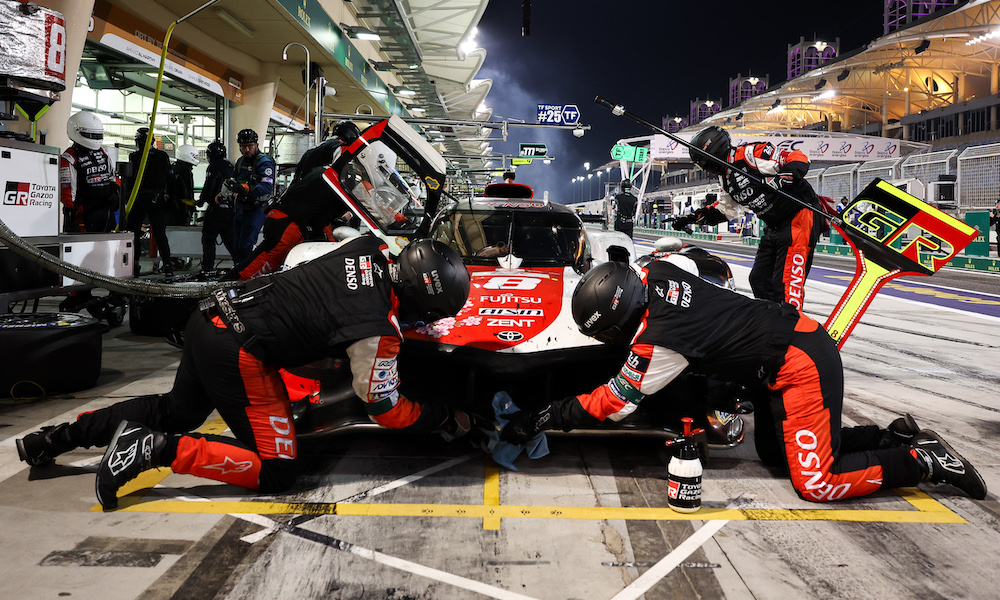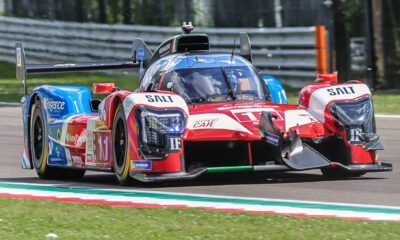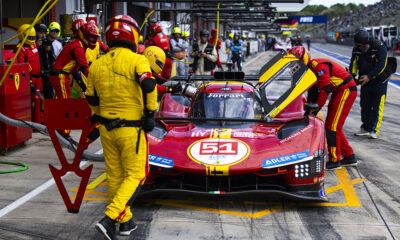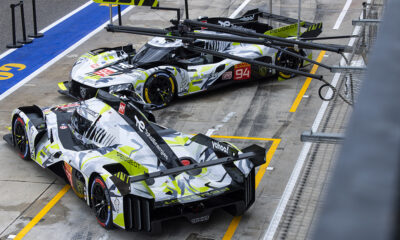Toyota Gazoo Racing’s FIA World Endurance Championship technical director said the 8 Hours of Bahrain was “not straightforward at all” for both cars as they managed separate issues.
The No. 8 Toyota GR010 Hybrid that dominated the race and secured the Hypercar drivers’ title for Brendon Hartley, Sebastien Buemi and Ryo Hirakawa faced a clutch problem.
Its No. 7 teammate that finished second in the hands of Mike Conway, Kamui Kobayashi and Jose Maria Lopez encountered spec torque sensor failure for the second time this season.
Toyota technical chief Pascal Vasselon indicated that both problems required stringent management from the Japanese manufacturer’s Cologne-based WEC squad to keep them in front.
“Not straightforward at all for both cars,” he said. “It has been quite intense because we have had problems on both cars.
“Car 8 has had quite early a clutch issue. At some point, during one stop, we were not able to restart the engine. Because on cold tires, the tires were just dragging and not counting the engine.
“So we have been very marginal. After, we decided to start in second gear, but it was really shaky.
“We lost quite a lot of time because the engine was not starting. [After] we went to start in second it was just a bit better to restart.
“The last three pit stops have been the most critical ones [but] it came earlier.”
The driveshaft-mounted torque sensor failure on the No. 7 Toyota was not the same type of issue that impacted a potential podium run at the 6 Hours of Portimao earlier in the season.
At Portimao, the No. 7 Toyota lost a significant amount of time and sacrificed points in the championship when it was ordered to enter the garage and change the driveshaft.
However, the procedure was changed after that episode and in Bahrain the No. 7 car was allowed to run in a reduced performance ‘back-up’ mode after Toyota informed the FIA and ACO about the situation.
“In Portimao, it was an internal failure [and] the sensor was in one piece,” explained Vasselon.
“It was just an electronic failure. This time, mechanically the sensor [which is] in two parts, opened up. To have this kind of two totally different sensor failures on the same car is really amazing.
“And the problem is, after that we had to fight a bit with the backup mode. Because the backup modes are not equivalent.
“We had to detune quite a lot of power to satisfy our friends from the ACO.
“The regulation has changed in the sense that we have been working more precisely on acceptable backup. So when it has happened, we inform the FIA. We went for the backup.
“But the backup is not exactly 100 percent, like before [the failure]. To make sure that we have no gain when this happens, we have to detune the power quite a lot.”
According to Vasselon, the No. 7 Toyota was running in back-up mode with the broken sensor hanging onto the driveshaft for the second half of the race.
This created a conundrum about whether it should come in for what could have been a lengthy pit stop.
“We were worried to rip off the loom because the sensor was hanging,” said Vasselon.
“And we were questioning ourselves whether we stop and we really properly disconnect it. Or we take the risk to have the loom ripped off and then it would have stopped the car.
“Looking a bit at pit stops, it was hanging but it was staying in place. So we went for it.”



























